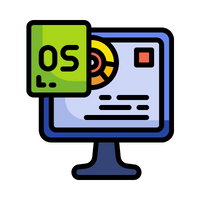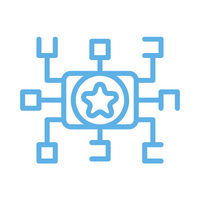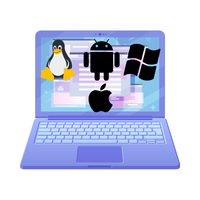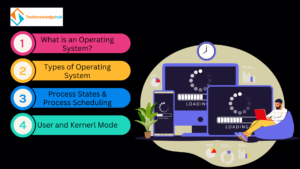In the world of technology, operating systems play a crucial role, acting as the backbone that supports and manages a computer’s hardware and software resources. Whether you’re an aspiring computer scientist or simply curious about the inner workings of your device, understanding the fundamentals of operating systems is a worthwhile endeavor. This article will provide a comprehensive introduction to the world of operating systems, covering their history, functions, types, and much more.

Table of Contents
What is an Operating System?
At the heart of every computer, from personal laptops to supercomputers, lies an operating system. An operating system is software that acts as an intermediary between the user and the hardware of a computer. It manages the hardware’s resources, allowing software applications to interact with the system’s components. Essentially, an operating system serves as the bridge that enables us to use our computers efficiently.
The Evolution of Operating Systems

The history of operating systems is a fascinating journey that has seen significant developments over the years. From the early days of punch cards and batch processing to the modern graphical user interfaces and multitasking capabilities, operating systems have evolved to meet the growing demands of users and applications.
Functions of an Operating System
Operating systems perform a variety of essential functions. They are responsible for managing memory, processes, files, devices, and providing security. Let’s delve into these functions to gain a better understanding of how they work together seamlessly to make your computer experience smooth and efficient.

The Kernel and Its Importance
At the core of every operating system lies the kernel. This central component manages the essential operations of the computer and interacts directly with the hardware. It is responsible for memory management, process scheduling, and communication with devices.

User Interface and Interaction
The user interface is the part of the operating system that you interact with. It includes the graphical elements and commands that allow you to interact with the computer. Whether you’re using a Windows, macOS, or Linux system, the user interface is what you see and use.
Memory Management

Memory management ensures that software applications have the memory they need to run efficiently. It also prevents one program from interfering with another, maintaining system stability.
Process Management
Process management handles the execution of programs, allowing multiple tasks to run concurrently. This is crucial for multitasking and responsiveness.

File System Management
File system management takes care of data storage, organization, and retrieval. It ensures that your files and data are stored securely and can be accessed when needed.
Device Management
Device management is responsible for communication between the operating system and hardware devices such as printers, keyboards, and storage devices.
Security and Privacy
Security is a critical aspect of any operating system. It includes user authentication, data encryption, and protection against viruses and malware.
Networking in Operating Systems
In today’s interconnected world, networking capabilities are essential. Operating systems support network connectivity, allowing you to access the internet and connect with other devices.

Types of Operating Systems
Operating systems come in various types, each designed for specific purposes. Common types include Windows, macOS, Linux, and mobile operating systems like Android and iOS. The choice of operating system depends on the intended use and personal preferences.
Virtualization and Cloud Computing
Virtualization technology and cloud computing have revolutionized the way we use and manage operating systems. These innovations have made it possible to run multiple operating systems on a single physical machine and access resources over the internet.
Conclusion
In conclusion, understanding the fundamentals of operating systems is crucial for anyone who uses a computer. These systems have come a long way, evolving to meet the ever-changing needs of users and applications. By comprehending the roles and functions of operating systems, you can make better use of your devices and appreciate the technology that powers them.

FAQs
1. What is the primary function of an operating system?
The primary function of an operating system is to act as an intermediary between the user and the computer hardware. In addition, it manages resources while also enabling software applications to run efficiently.
2. What is the kernel in an operating system?
The kernel is the core component of an operating system that manages essential operations. Specifically, it handles memory management, process scheduling, and communication with hardware devices.
3. Can I change my operating system on my computer?
Yes, in most cases, you can change the operating system on your computer. However, the process can be complex and may require reinstalling software as well as transferring data.
4. How do I choose the right operating system for my needs?
The choice of the right operating system depends on your intended use as well as your personal preferences. For example, Windows, macOS, and Linux are common for desktops and laptops, whereas mobile operating systems like Android and iOS are popular for smartphones and tablets.
5. What are the advantages of virtualization and cloud computing in operating systems?
Virtualization and cloud computing, on the one hand, allow you to run multiple operating systems on a single machine. This means that, instead of needing separate physical hardware for each operating system, you can efficiently use virtualization to create and manage multiple virtual environments on a single device. As a result, organizations can save costs, optimize hardware usage, and streamline system management.
On the other hand, cloud computing enables you to access resources over the internet, which provides greater flexibility and scalability for various applications and services. For instance, businesses can scale their computing power up or down based on demand, thereby reducing unnecessary expenses and improving efficiency. Moreover, cloud computing eliminates the need for on-premises infrastructure, thus reducing maintenance efforts and allowing companies to focus on their core operations.
In summary, virtualization enhances hardware utilization, while at the same time, cloud computing offers scalable, on-demand access to computing resources, ultimately making both technologies essential for modern IT environments.



